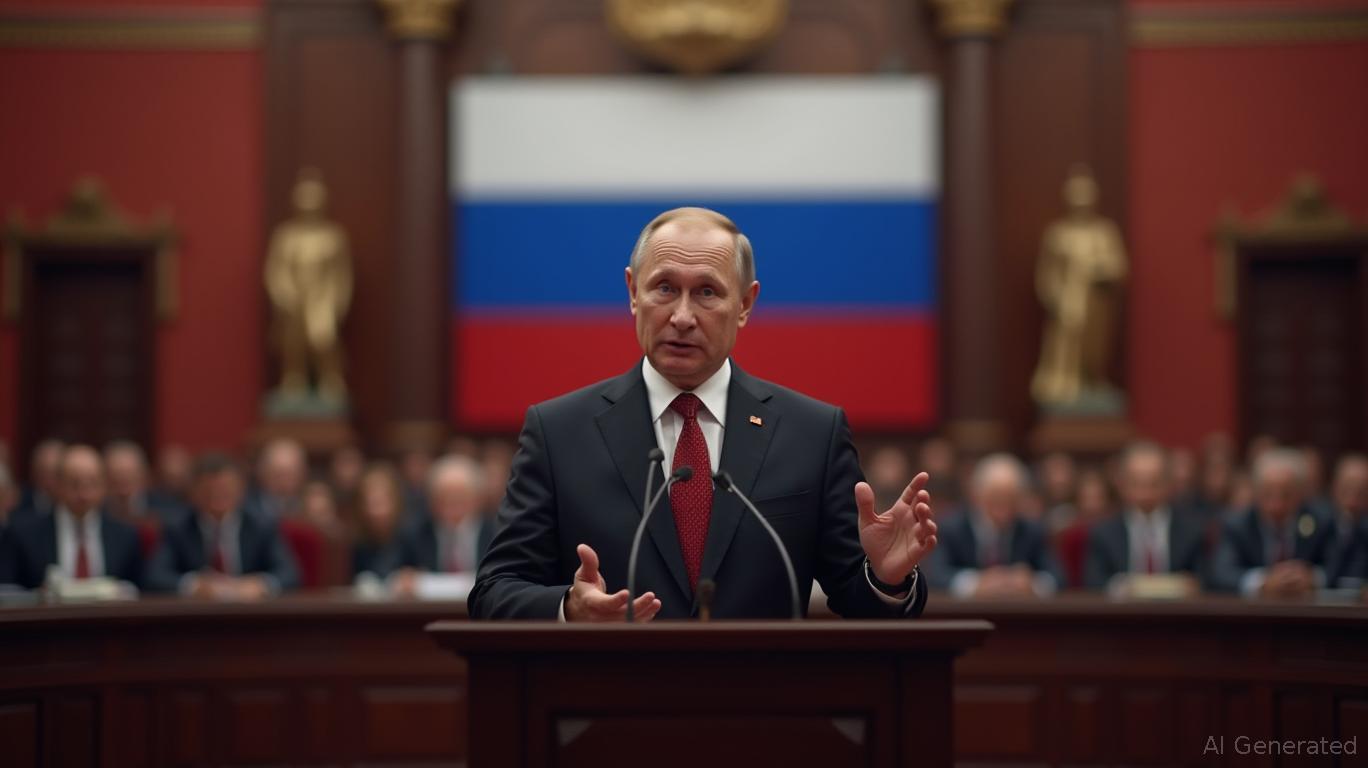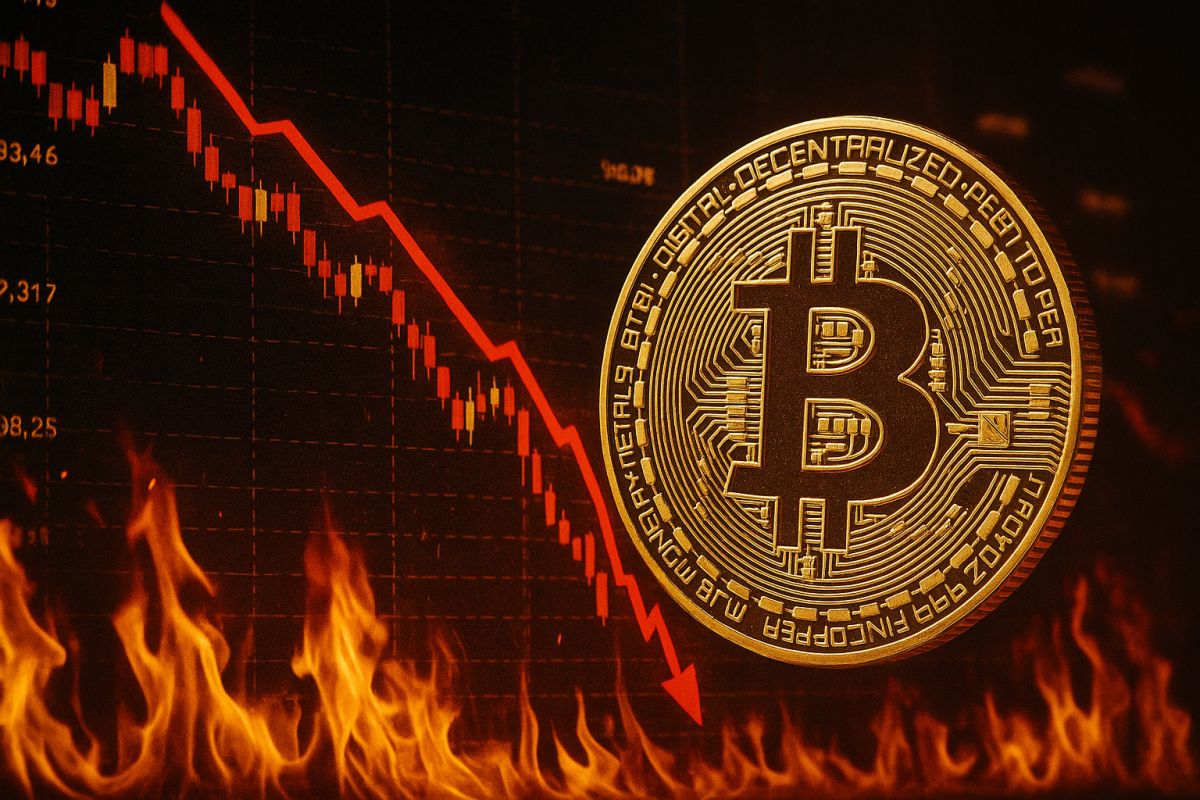Fortress Ruble: Russia Closes Crypto Access to Bolster Digital Independence
- Russia's central bank bans domestic crypto payments, prioritizing its digital ruble CBDC launch by 2026 to reinforce financial sovereignty. - Stablecoins are allowed for international trade but prohibited domestically, balancing innovation with central bank control over monetary policy. - The policy aims to prevent crypto-driven financial instability, restrict domestic crypto use to speculation, and align with China's state-controlled CBDC model. - Critics argue the ban stifles innovation, while proponen
The Bank of Russia has reiterated its opposition to the use of cryptocurrencies for payments within the country, making it clear that it is prioritizing the rollout of its own digital ruble as it seeks to strengthen its grip on the national financial system. In a recent statement, Governor Elvira Nabiullina stressed that crypto assets are incompatible with Russia’s control over its monetary system, explaining, "Cryptocurrency cannot be used for payments within Russia" due to the absence of regulatory controls. This stance is consistent with ongoing plans to introduce the digital ruble, Russia’s central bank digital currency (CBDC), by autumn 2026.
The policy specifies that stablecoins—digital tokens tied to traditional currencies—are allowed for cross-border payments and foreign investments but remain off-limits for domestic transactions, according to a

This policy reflects international worries about the dangers posed by private digital currencies. Nabiullina pointed out that unregulated crypto activity could threaten the stability of Russia’s banking sector and undermine trust in the ruble. With around 20 million Russians reportedly holding more than $10.15 billion in crypto assets as of early 2025, the prohibition confines these assets to speculative or international purposes, excluding them from routine domestic transactions.
At the same time, the digital ruble project is gaining traction. The central bank sees the CBDC as a means to upgrade payment infrastructure, decrease dependence on foreign currencies, and broaden access to financial services. By taking exclusive control of digital payments within Russia, the bank aims to avoid disruptions from decentralized technologies and keep pace with the global move toward CBDCs.
This approach also addresses proposals from Russian lawmakers, such as Senator Artem Sheikin, who has called for a regulated framework for a stablecoin linked to the ruble, as noted by Yahoo Finance. Nevertheless, the central bank has chosen a government-led model over private sector alternatives. This mirrors China’s digital yuan policy, which favors centralized management to safeguard economic order.
Some critics believe the ban restricts consumer options and could hinder crypto innovation. However, supporters within the administration argue that these measures are essential to combat illegal financial activities and uphold the ruble’s leading role in the domestic economy. The central bank’s prudent approach stands in contrast to more liberal policies in places like Germany, where open banking services such as Tink have enabled crypto payments via bank transfers, according to
As Russia prepares to launch the digital ruble in 2026, its policy underscores the ongoing struggle between adopting new financial technologies and protecting established financial systems. Although the ban on crypto payments at home may face resistance from a tech-savvy public, it reinforces the central bank’s authority over digital currency in Russia. This decision may also set a precedent for other countries facing similar regulatory challenges as stablecoins and CBDCs continue to transform global finance.
Disclaimer: The content of this article solely reflects the author's opinion and does not represent the platform in any capacity. This article is not intended to serve as a reference for making investment decisions.
You may also like
Ethereum Updates: BitMine’s $13.7 Billion Reserves Stand Strong Amid Market Downturn, Aiming for 5% Share in ETH
- BitMine Immersion (BMNR) holds $13.7B in crypto, leading Ethereum treasury size with 2.8% supply control. - Aggressive ETH accumulation (662,169 tokens in 30 days) supports "5% strategy," backed by Ark Invest and Galaxy Digital. - Ethereum's $3,714 price lags technical indicators, while BitMine's $1.5B daily trading volume amplifies market influence. - Institutional partners anticipate post-Fusaka upgrade buying, but bearish macro trends cap retail price targets at $5,000.

Strategic token distributions and repurchase initiatives fuel sustained expansion in the crypto sector
- Binance Alpha's token swap with Conflux triggered a 20% AI16Z price surge, highlighting cross-exchange volatility in small-cap crypto assets. - Binance's Momentum (MMT) airdrop targets BNB product users, distributing tokens pre-trading via spot wallets within 24 hours of eligibility closure. - Aster's buyback strategy burns 50% of tokens while reserving 50% for future airdrops to reduce supply and reward long-term holders. - SuiNS's governance airdrop rewards early adopters with automatic NS token distri

Bitcoin price forecast: BTC could face further correction as momentum weakens

Bitcoin Breaks ‘Uptober’ Tradition With 5% Drop After a Record Liquidations
